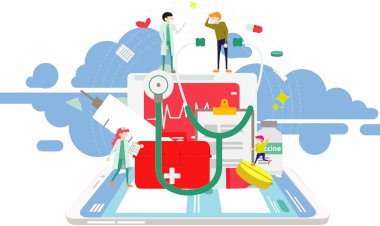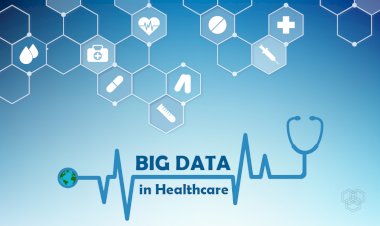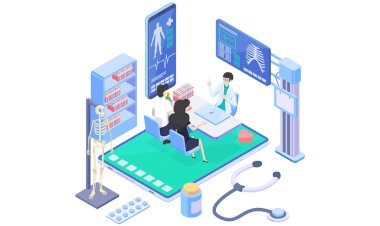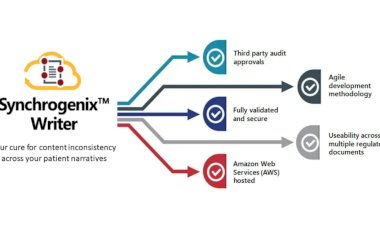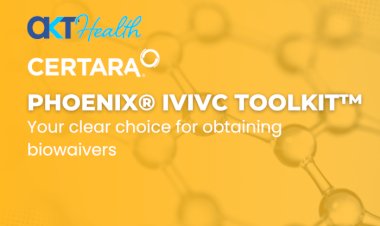Blockchain technology for improving clinical research quality
A blockchain serves as a distributed database which maintains a continuously growing list of transactional records organized into blocks, using consensus algorithms allowing untrusted parties to agree on a common state while ensuring tamper resistance.
While blockchain principles were first applied in the financial world as the technology that allowed Bitcoin to operate, it has applications for many industries including healthcare
A blockchain serves as a distributed database which maintains a continuously growing list of transactional records organized into blocks, using consensus algorithms allowing untrusted parties to agree on a common state while ensuring tamper resistance. Valid transactions stored in a blockchain are digitally signed and time stamped by their sender, providing cryptographically irrefutable evidence of both the provenance and existence of a record at a given point in time.
1.Blockchain as solution at security:
Ethereum is a blockchain protocol that features smart contract functionality, and has been described as a next-generation cryptocurrency and decentralized application platform
Secure information sharing methods, which allow both healthcare providers and their covered entities to verify the correctness of data, are crucial for ensuring proper medical services. This is where blockchain comes in useful, as one of its main advantages is data integrity. When information is recorded and encrypted, it becomes impossible to change or remove
Data security, data storage, data availability, and confidentiality are some of the most important characteristics in the application of healthcare blockchain. The encrypted distributed ledger has potential to improve the quality of patient care, as well as the economics and efficiency of healthcare operations, particularly considering growing data volumes with emerging data sources.
Using Blockchain technology data can be more easily stored and subsequently referenced to for lab results, medications, or allergies. The risk in confidentiality is affected by what information is entered into the blockchain, which is why a “minimal, sufficient approach” is recommended
A blockchain-enabled solution would provide innovative design opportunities to harden Personally Identifiable Information (PII) and Protected Health Information (PHI) protection liable to smart contracts, data provenance, optimizing on-chain and off-chain data storage, and data minimization; coupled with individual’s governance over others access to and use of their data — in addition, of course, to the data and metadata encryption inherent in blockchain.
Within this blockchain sensitive data can be encrypted to further protect data confidentiality and privacy. Requirements such as a patient’s right to opt-out of sharing data and the right to be forgotten can have direct impact on what sensitive data can go on the blockchain and what sensitive data must remain off the blockchain.
Designing blockchain-enabled solutions that connect healthcare ecosystem participants across multiple geo-political and geo-governance boundaries may explore the use of off-chain encrypted decentralized storage (such as Inter Planetary File System, ‘IPFS’), and storage zones for meeting compliance across HIPAA, and other.
2.Data Transparency:
Blockchain can automatically authorize information and other related contractual processed. There is greater transparency, lower administration costs and faster claims. Imagine a world where every major insurance player are connected, and are members of a simple blockchain network. You as a customer travel to any Geography and need healthcare service. The blockchain would hold certain verification information and the current coverage remaining, coverage terms, Insurance provider etc. Say you have about 6000$ remaining in your insurance cover. The payer that would be servicing you in the new geography would simply query the blockchain, process the claim, and update the blockchain again with the transaction details.
The approval for treatment or surgery happens immediately. Reconciliation between the payers can happen later. This would drastically bring down the delay since the entire latency time owing to and from communication between the home and host payers is virtually eliminated. The patient gets the service when he needs it the most. Turnaround time gets reduced and thus Customer Satisfaction would increase.
3.Building reliable clinical studies:
Inviolability and historicity of data are two major features of data at the functional level, “the data level”. Regarding inviolability and historicity of data, it follows that Blockchain ensures that events are tracked in their correct chronological order, which largely prevents a posteriori reconstruction analysis.
Data integrity is ensured by the cryptographic validation of each transaction. This is key to ensuring the sincerity of data — limiting data falsification, data “beautification” and in some sense data invention.
Traceability and historicity of the data are among the core functionalities of the technology. Each transaction with Blockchain is timestamped. This information is publicly transparent, any user owns a copy of the proof of the time-stamped data, complex flows of heterogeneous data and metadata that circulate in a clinical trial, implying numerous healthcare stakeholders, and all documents whose proof of existence can be stored in Blockchain. Thus, the existence of data becomes provable while the data remain confidential.
Before the clinical trial begins, consents and clinical trial protocol, including type of study, primary and secondary outcomes and inclusion and exclusion criteria, can be bundled into data structures stored on the Blockchain. Data structures are then in one-to-one correspondence with consents and the protocol and its revisions, which accounts for robust proof of their existence. This feature can help prevent typical issues related to non-traceable clinical trial protocols, such as selective reporting outcomes related to selective reporting of harm, under-reporting of non-significant outcomes and mismatches between planned outcomes in the protocol and final publication. In the Blockchain metadata set, we can also store information such as the mode of data collection, attribution method, dates of withdrawals to distinguish between early and late ones and dates of recurrent events.
The statistical analysis plan is a critical need and is timestamped before the analysis is completed and, for a blinded study, before the data are unblinded. This plan includes the statistical methods, definition of harm events and multiple variable adjustments, if any.
For example, sample size is a key item to compute to ensure that a study has enough power. Research teams often have no precise idea of the outcomes, so estimating the needed power in advance is difficult, which leads to an a posteriori calculus bias. Here, we can imagine timestamping a set of metadata on the Blockchain: sample size, type I and type II errors, estimated event rate and treatment effect of interest. Timestamping will constitute a landmark in the Blockchain that will testify to a priori-computed sample size.
Taking into account that scripts continue to evolve and that a fixed state of the code is used to process the data, this precise state of the code must be “frozen” and timestamped to ensure that conditions under which data were checked and analysed are reproducible.
4.Secure communication and sharing of data in clinical trials:
Patients have little access to their health data and cannot easily share with researchers or providers. Giving patients the opportunity to share their data securely, for research purposes or across their healthcare providers, creates opportunities for major advancements in healthcare. Blockchain technology, which enables organizations to work together with more trust, is designed to help make this a reality. Blockchain technology establishes accountability and transparency in the data exchange process. In the past, large scale sharing of health data has been limited by concerns of data security and breaches of patient privacy during the data exchange process.
It is estimated that 50% of clinical trials go unreported, and investigators often fail to share their study results. Blockchain-enabled, time-stamped records of clinical trials, protocols and results could also address the issues of fraud and error in clinical trial records.
Blockchain-based systems could help drive unprecedented collaboration between participants and researchers around innovation in medical research in fields like precision medicine and population health management.
5.Drug Traceability:
One of the most serious problems in pharmacology is drug counterfeit. According to the Health Research Funding Organization (HRFO),
1.Approximately 10%-30% of drugs in developing countries are fake10% to 30% of the drugs sold in developing countries are counterfeit.
2.The counterfeit drug market is worth $200 billion annually.
3.Internet sales of counterfeit drugs account for $75 billion of the total market.
The main reason is not in counterfeiting itself, but, rather, that these drugs provide different effects than their traditional medicinal counterparts. They may not help patients at all or may even be harmful and dangerous to a person’s health.
A blockchain can be either public or private. To ensure the authenticity and traceability of the drugs, the companies that register a product on the blockchain have to be trustworthy. Hence, only private blockchains controlled by a central entity are logical to make sure that fake drugs are not registered. A company’s access to the “drug blockchain” would therefore be a proof that the drugs they produce are authentic.
The pharmaceutical companies decide which actors of the supply chain act as miners. It could be manufacturers, distributors or retailers. Depending on the position on the supply chain, each person could have different rights: labs can register drugs whereas wholesalers can only verify transactions.
When a drug is produced, a hash is generated that contains all the relevant information about the product. Each time the drug moves from an entity to another (e.g.: from the manufacturer to the distributor), the information is stored on the blockchain, making it easy to track the drug.
Blockchain technologies help with two main issues when it comes to drug traceability: first, it allows companies to track their products down the supply chain, creating an airtight circuit, impermeable to counterfeit products. Second, it also allows stakeholders, and especially labs, to take action posteriori in case of a problem by identifying the exact location of their drugs.
6.Patient Data Management:
Patient data privacy is strictly regulated by the Health Insurance Portability and Accountability Act (HIPAA), and requires PHI to be totally secure. There is, however, another problem related to PHI: sometimes, patients need to share their medical records with third parties (e.g. with pharmacies when they need to buy specific medicines). So, how can blockchain help protect data while providing partial access at the same time?
Blockchain can provide a structure for data sharing as well as security. Healthcare providers collect information from the patient such as name, date of birth, procedures performed and prescriptions. The data is stored in the organisation’s existing databases and/or on cloud computing systems. A hash is created from each source of data and is redirected to the blockchain along with the patient’s public ID. Smart contracts are used to manage patient data access.
Through an API, healthcare stakeholders can query the blockchain that provides the location where the data can be found without revealing patient identity.
If needed, the patient can share his full medical record (with or without identifiable data) to any stakeholder. For instance, he could share identifiable data with his doctors and non-identifiable data with Big Pharmas looking for phase IV information. The patient can decide to whom he gives access to and on which conditions. Once accessed, data can be analyzed and shared by the medical community and researchers.
One of the main advantages of this technology, is that it allows the patient to control the access he gives to his medical records. The patient defines through a smart contract the condition on which his data can be accessed on the blockchain. In fact, all this will be done through an API and the patient will set the conditions on his profile.
When the patient is conscious: the combination of the patient’s and the provider’s private keys unlocks the access to the data.
If the patient isn’t conscious: one or more third parties, picked by the patient, need to give their permission before the healthcare provider accesses the data.
Either way, the patient has full control over his medical information and can decide whom to share it with.
Furthermore, medical records are not the only source of data related to a patient. Indeed, as IoT develops, wearables become an important souce of information. This type of data could be used in the patient’s interest to track his activity, set goals and adapt treatments. All this can be done through smart contracts. Indeed, the patient and his GP can define the clauses of the contract and set objectives and consequences if the patient succeeds or fails to reach them.
The patient’s wearables record information and compare it to the clauses of the smart contracts in order to produce an action (reward or penalty). Moreover, the data is also sent to the GP, which can interact with the patient, see what are the main difficulties in reaching the objective were, and therefore adapt the care.

 Meghana
Meghana 











